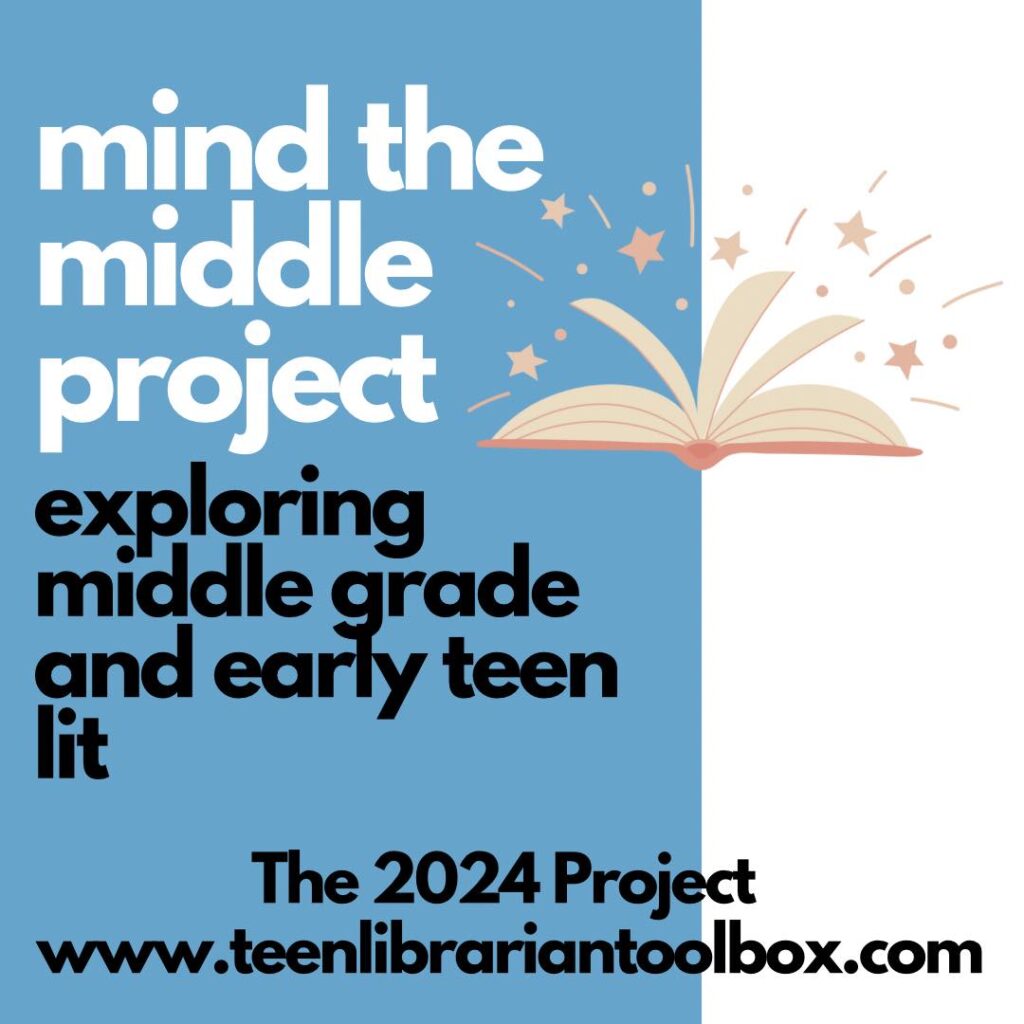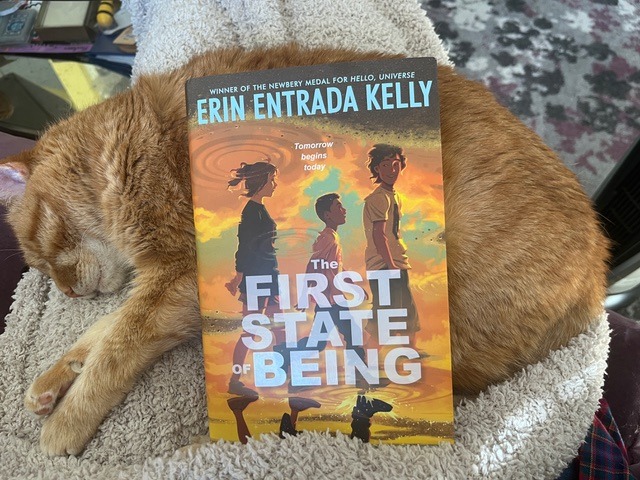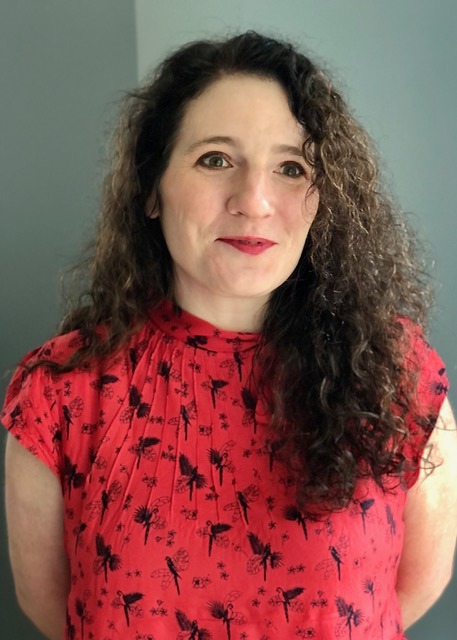On Middle Grade and the Present Moment, a guest post by Anne Ursu

It’s late summer in 1999 and twelve-year-old Michael, the protagonist of Erin Entrada Kelly’s The First State of Being, is overwhelmed with worry over the Y2K problem. His single mother works so hard, so he sees it as his job to make sure they are prepared in case infrastructure fails after the clocks turn to 1/1/2000. The anxiety consumes him, so much that he shoplifts canned food and steals tools to hoard under his bed. Just in case.
And it’s not just Y2K, the smallest indication of potential danger sends him spinning off , so when a mysterious boy starts loitering around the complex, Michael tells us, “It was easy enough to imagine an endless series of dangerous scenarios. They clicked through Michael’s mind like scenes in a movie. Sociopathic teenager burns down apartment complex. Sociopathic teenager attacks innocent twelve-year-old shoplifter… ” And on and on.
ADVERTISEMENT
ADVERTISEMENT
I get it. My brain is populated with very skittish bunnies who, at the slightest provocation, will scatter into their elaborate tunnels, each of which ends in doom. For Michael, Y2K is a precipice he’s moving inexorably toward; here in 2024 that precipice is just where we live now. I can’t even imagine what it feels like to be kid, for whom our unprecedented times are just ordinary. That precipice is all they know.

Erin ingeniously refracts contemporary anxiety through the lens of Y2K, allowing us to identify with Michael’s feelings without being overwhelmed by our own. She crafts an eidetic representation of a particular moment in time where it felt like something apocalyptic could happen, but readers know it didn’t. People worked hard on the problem and they fixed it. It’s all in the past now. And Ridge, that mysterious loitering boy, comes from a future almost two centuries away, reminding us that there’s whatever lies beyond the precipice, and there’s also a future after that.
But the real heart of the book isn’t about the past or the future; it’s about right now.
In addition his weird clothes and weird attempts at 90’s slang, Ridge brings with him some sage advice about dealing with anxiety. He tells Michael he’s better off not worrying about the future. “Focus on the here and now,” he says:
“The first state of being… That’s what my mom calls the present moment. It’s the first state of existence. It’s right now, this moment, in this car. The past is the past. The future is the future. But this, right now? This is the first state, the most important one, the one in which everything matters.”
It’s Michael’s challenge over the course of the book to learn to embrace the first state.

In Melanie Conklin’s Crushed (7/24) seventh grader Sophie has started getting panic attacks. It’s no wonder; it’s the first year back at school after COVID lockdown, and the chaos of middle school hallways sends her system into overload. Other kids make her nervous, after all, as she tells us, “Touching can literally kill you.” When she has a panic attack at school, someone takes a video, and it goes viral. This does not exactly help Sophie’s anxiety.
Middle school is bad enough on its own, but Sophie’s experience is so particular to the present moment, where readers who have spent a significant portion of their childhood living in a pandemic. Sophie ends up going into therapy for her panic disorder, where she’s given a lot of techniques for managing that panic, as well as her general anxiety. “Instead of worrying about what might happen,” her therapist says, “try asking yourself, What if it all works out?”
Of course, the mattering of these books isn’t in the advice grown-up characters give. The mattering is in the experience of the story itself. These books are speaking to kids at this particular moment in time, connecting them with characters who are grappling with some of the same issues that they are, and who over the course of the story, build strength and find healing. And so, in the particular magical space created between reader and book, the reader can build strength and heal a little too.

It’s the process of healing that’s at the heart of Natalie Lloyd’s The Witching Wind. As the book begins, the protagonists, Roxie and Grayson, are each dealing with major blows to their sense of safety and self. The formerly effervescent Roxie enters sixth grade mortified after being the victim of a terrible bullying incident, which only exacerbates the anxiety attacks she calls the Dreads; meanwhile foster child Grayson’s older sister has ghosted her after turning 18, after promising that she’d become Grayson’s guardian as soon as she was a legal adult.
But this is a Natalie Lloyd book, and even as the girls struggle the pages are filled with hope and a sense of magic that buoys the girls toward figuring out how to heal. Healing can be found in good memories, in friendship, in sending goodness out into the world, and all of that Roxie finds her shine again and Grayson decides that the best way for her to heal is to shine a light on others.
ADVERTISEMENT
ADVERTISEMENT
These books all share anxiety as a theme, but in conversation with each other they feel like they are capturing something essential about the power of middle grade books. Nobody gets lost in a book like a kid; and being completely absorbed by story lets them live in the first state of being. And while things rarely work out in the way protagonists hope in the beginning, they do lead to positive change. The pattern of middle grade builds toward hope. And, as Grayson tells us, the stories themselves have purpose and power.
“This is it, isn’t it?” Grayson asks Roxie near the end of The Witching Wind. “This is how you poke holes in the dark. You do it with stories.”
Stories, Grayson concludes, make people feel safe enough to shine.
That feels like the whole point of middle grade, no matter what the story: the books create space that makes kids feel safe enough to shine.
Meet the author

Anne Ursu’s new book, Not Quite a Ghost, is about a girl who moves into a haunted house just as she’s hit by a disabling post-viral illness. Anne is the author of several other middle grade novels, including the Kirkus Prize finalist The Troubled Girls of Dragomir Academy, and the National Book Award longlisted The Real Boy. She lives in Minneapolis with her family, cats, and lots of books.
About Not Quite a Ghost

From the award-winning author of The Troubled Girls of Dragomir Academy comes an unforgettable and deeply personal story of the ghosts that surround us—and the ones we carry inside.
The house seemed to sit apart from the others on Katydid Street, silent and alone, like it didn’t fit among them. For Violet Hart—whose family is about to move into the house on Katydid Street—very little felt like it fit anymore. Like their old home, suddenly too small since her mother remarried and the new baby arrived. Or Violet’s group of friends, which, since they started middle school, isn’t enough for Violet’s best friend, Paige. Everything seemed to be changing at once. But sometimes, Violet tells herself, change is okay.
That is, until Violet sees her new room. The attic bedroom in their new house is shadowy, creaky, and wrapped in old yellow wallpaper covered with a faded tangle of twisting vines and sickly flowers. And then, after moving in, Violet falls ill—and does not get better. As days turn into weeks without any improvement, her family growing more confused and her friends wondering if she’s really sick at all, she finds herself spending more time alone in the room with the yellow wallpaper, the shadows moving in the corners, wrapping themselves around her at night.
And soon, Violet starts to suspect that she might not be alone in the room at all.
ISBN-13: 9780062275158
Publisher: HarperCollins
Publication date: 01/16/2024
Age Range: 8 – 12 Years
Filed under: Guest Post
About Amanda MacGregor
Amanda MacGregor works in an elementary library, loves dogs, and can be found on Twitter @CiteSomething.
ADVERTISEMENT
ADVERTISEMENT
SLJ Blog Network
Top 10 Posts of 2024: #3
31 Days, 31 Lists: Best Picture Books of 2024
Taxi Ghost | Review
When Book Bans are a Form of Discrimination, What is the Path to Justice?
ADVERTISEMENT







